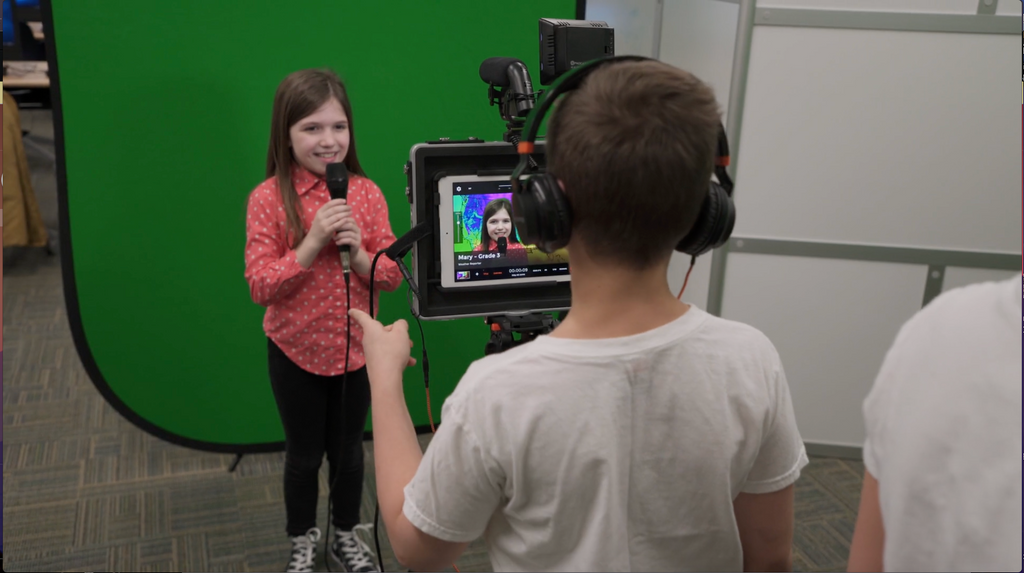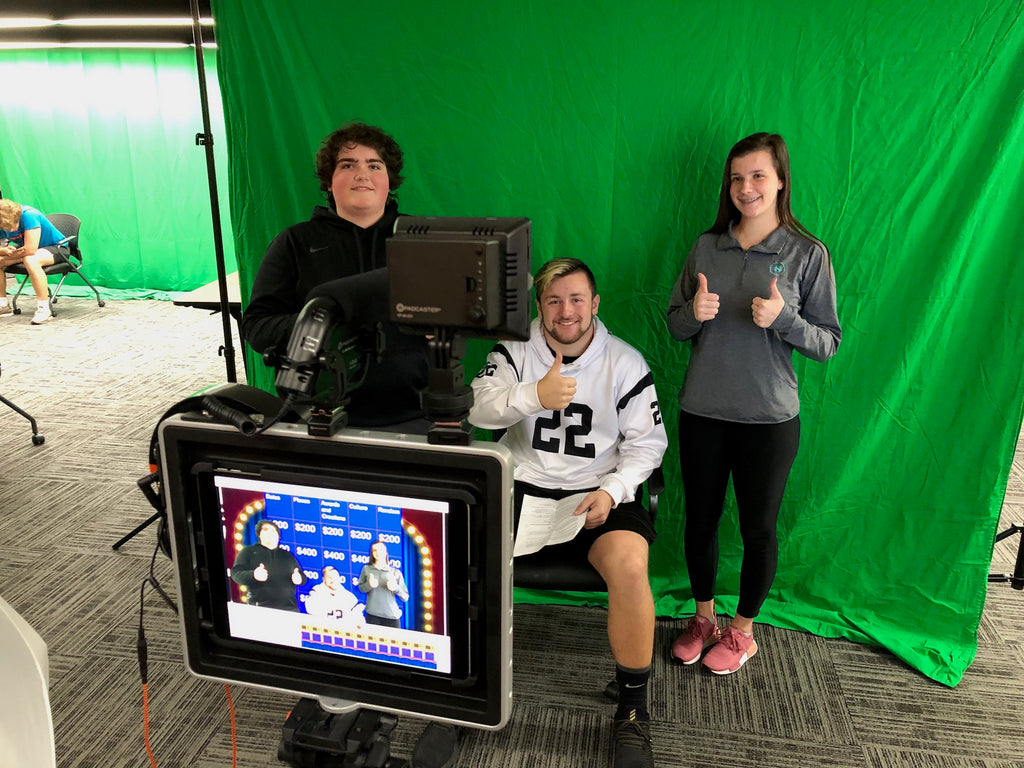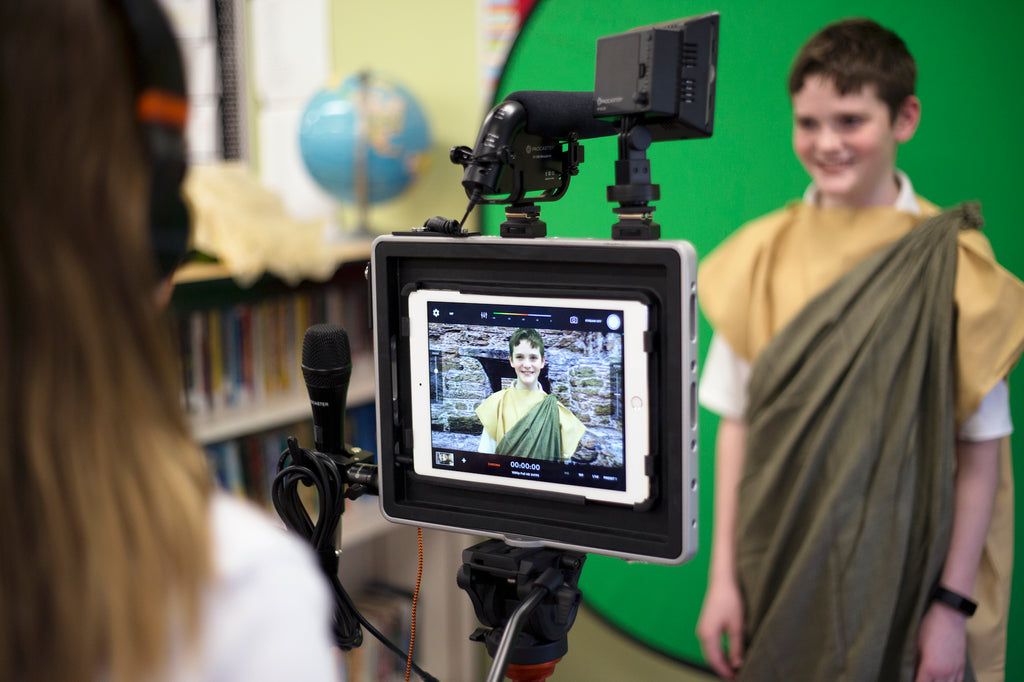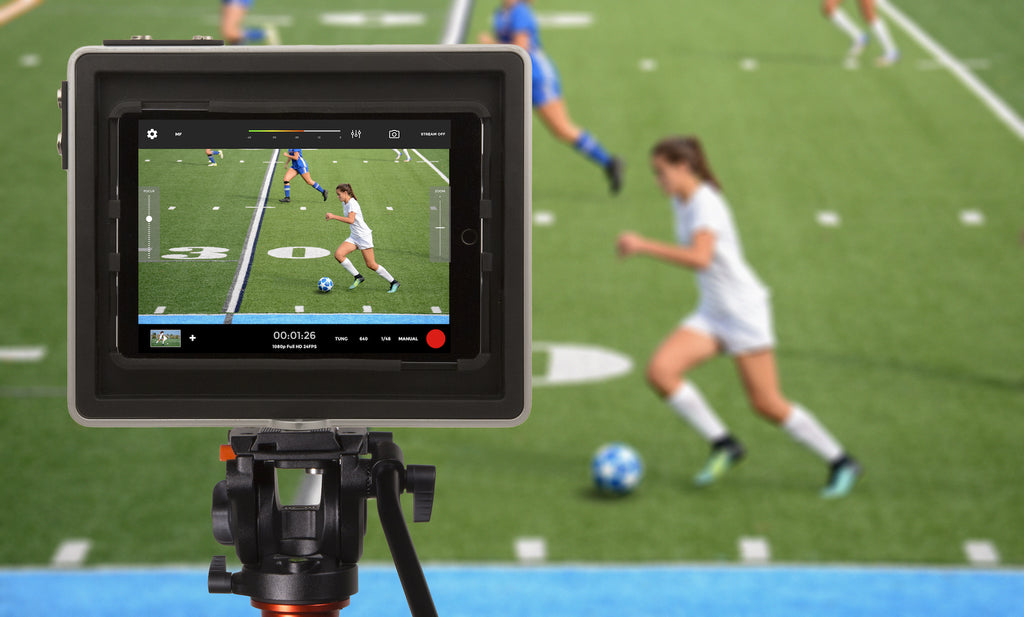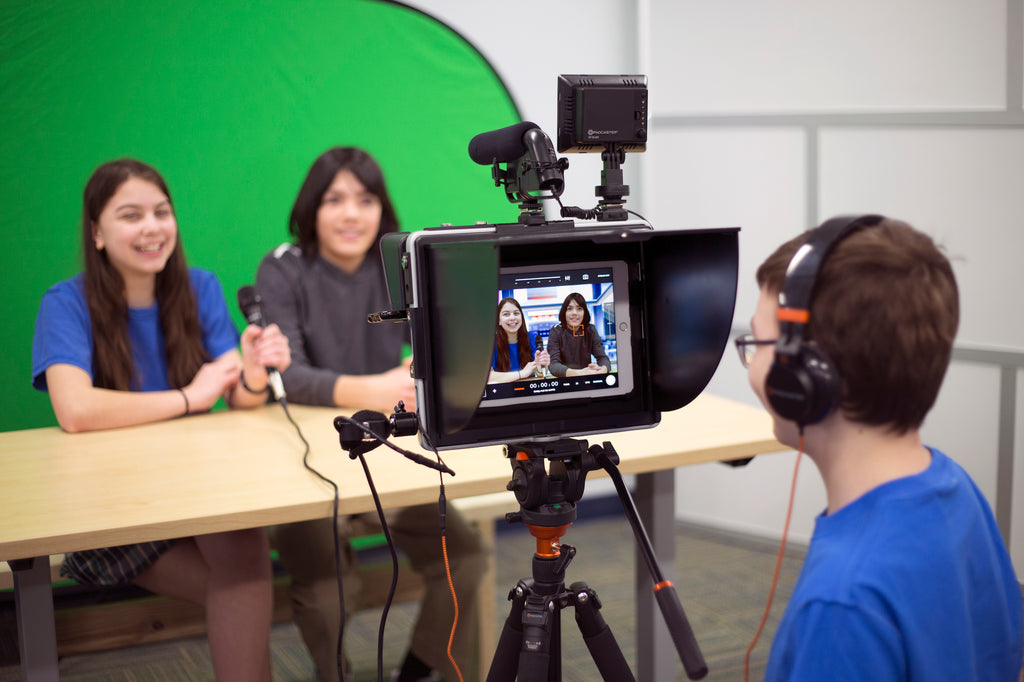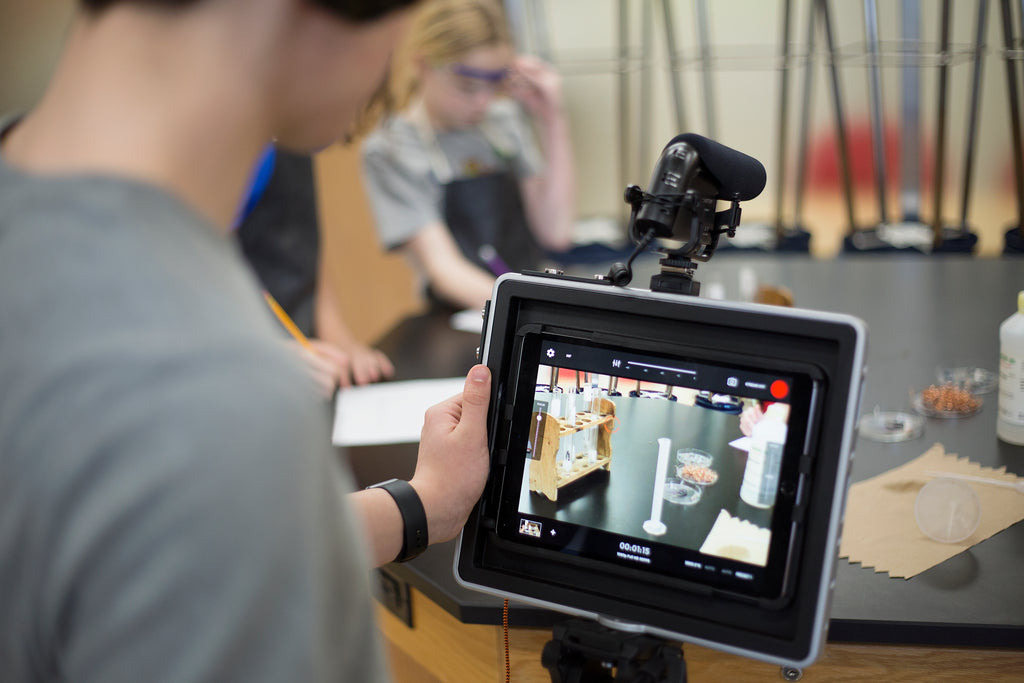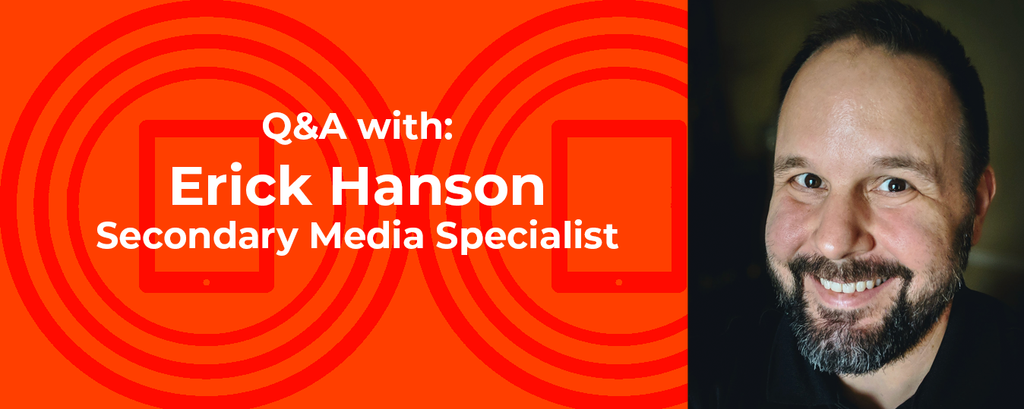
For more than 15 years Erick Hanson has been a dedicated educator who has focused on helping students learn and express themselves with video technology. Mr. Hanson founded EP Media and the EP Media YouTube channel, an almost entirely student-run media production program. The program focuses on giving students access to high-quality film tech, allowing them to learn from their mistakes and gain confidence by sharing their videos with the world. Students produce all kinds of videos that range in topics like interviewing teachers, helping create commercials for local businesses, PSAs about the dangers of drunk driving, and celebrating their senior classes with “Year in Review” videos. By utilizing their Padcaster, Mr. Hanson’s students learn how to easily produce high-quality educational content without being held back by cumbersome and overly complicated equipment.
Tell us a little about your work as an educator. What led you to start focusing on teaching technology and media production?
While I spent my first twelve years as a high school history teacher, the content was always secondary to pedagogy and helping kids figure out who they are and how they learn. So, as a history teacher, I was always compelled to find ways to inspire and empower my students. I think that you can make a lot of progress toward these two goals by focusing on who each student is as an individual and then, empowering them to contribute their skills and talents. I used innovative teaching methods, many of which used technology, to meet students where they were, both in their academic ability and in their interests. In the past five or six years, this meant employing YouTube, both as a source for information and as a platform for communication, more as a tool in my classroom.
What is EP Media? Who is involved in it and how?
EP Media is the brand we’ve given to our video production program at our school. Any student in our middle or high schools can get involved and the degree of their involvement can be as little or as much as they want. In that way, it is a kind of library resource and/or club - it’s always there for students to take advantage of.
Take us through your process of building a media program from scratch. What were your original goals and how did they change as your program grew?
I spent so much time researching and interviewing professionals in the video field about the kind of gear we needed to purchase for our program. One of the original goals of our program was to put professional-grade tools in their hands, trusting that if students only had inspiring tools to work with, they would create inspired work. That said, video production gear can get extremely expensive very quickly, so we were limited in the amount of cameras, computers, lights, microphones, and other gear we could get. The result, after three years with this approach, is that while to work we get to do is awesome, it is only truly accessible to a small number of students. Therefore, our goals are shifting to make video production more accessible by providing more entry-level gear.
When starting the program, what do you think was the most important element to the budding media program?
The most important element of our budding media program was ensuring that it remained student-led. By this, I mean that students make decisions not only on the projects they are taking on but also on the means by which we raise and spend money to grow our program. Since students are convinced that this is their program, not a teacher’s, they work to produce excellent content.
What were the first projects you created with students? What worked and what would you have done differently?
Our first projects focused on celebrating our school and some of the cool stuff that’s happening that, perhaps, our community was unaware of. As we took on projects like this, as the teacher and advisor of the program, I began to push projects at the students that served the goals of the buildings and district. It didn’t take long before I saw the students efforts shift, as they were being asked to create projects for someone else. This is how I learned that allowing this program to be in the creative hands of our students was a non-negotiable.
How did you get the community outside of East Pennsboro Schools involved with EP media?
I was able to articulate my vision for this program to the members of the East Pennsboro Education Foundation - they trusted me with a grant to get this program off the ground and have been incredible partners with us along the way as we have grown. As we have grown, we intentionally looked for ways to reach out to local small business owners and our local historic society. These key stakeholders have been advocates for us - we couldn’t have had the impact we have had so far without their support.
What projects have you created within the community? In what ways have your students benefited from working with people outside of the school district
Our middle school students created an ad for a local ice cream shop. This project started with my relationship with the shop owner. I knew she was a huge advocate for providing opportunities for East Pennsboro students, so we pitched the idea to do an ad for her, free of charge. Our students had to contact her, set schedules, meet deadlines, and produce a final product. The kinds of lessons they learned by doing authentic work in the community are some of the best examples of how our video program is about so much more than the technology components.
What projects do you feel have had the most benefit for students and EP media?
The projects that have most benefited my students have been the ones that I have had the least amount of involvement in producing. That said, careful thought had been placed in establishing a learning environment in which students felt empowered to be creative and try new things without fear of penalty. Students have reflected back to me that they learned so much about project management, interviewing techniques, lighting and sound, teamwork and collaboration - so many things that they hadn’t anticipated before taking on a project.
Why did you decide to create a YouTube channel and what benefits have you seen?
To me, using YouTube as a publishing platform is a crucial component of our program. The stakes are raised when student work is presented to a global audience. They know that their friends, out-of-town relatives, and prospective college admission personnel can access their work with the click of a link and watch it on their phones or 4K TVs at home. The ubiquitous nature of YouTube allows us to bridge the divide between the classroom and the “real world”.
Have you seen a growth in interest in video production among the student body since starting EP Media? Why do you think that is? Was there a particular project that increased involvement?
Since starting EP Media, I have seen an uptick in interest in video production and I think it’s because we have eased the learning curve for students. Students now know that if they decide to get involved, they will enter a team that is happy to share what we’ve learned and contribute to other students’ projects. Some of our more creative projects, such as our EP Hot Ones series, where a student interviews a teacher or administrator while eating increasingly spicy hot wings, have caused some of our students to tap into their creativity and try to make something fun.
What projects are on the horizon for EP Media in the 2019/2020 School year?
We are planning to put our spin on the morning announcements - something that we’ve put off for a while now. We knew that if we were going to take this on, we needed it to be excellent, so there has been significant work done to prepare for this new project. We hope to hit the ground running with our “morning news” show at the start of the school year.
What advice do you have for other educators that are trying to start a video production program from scratch?
Focus on the students. Keep their inspiration and empowerment as your top priority. Allow them to learn from their mistakes and avoid the temptation of fixing their problems. You’ll be surprised how many lessons are learned apart from the technology. Encourage your students to analyze the video content they like the most - have them deconstruct it and try to rebuild it their own way, piece by piece. Be patient and celebrate their accomplishments.
Need More Information?
Fill out the form below to get in touch with a member of the Padcaster Team.
